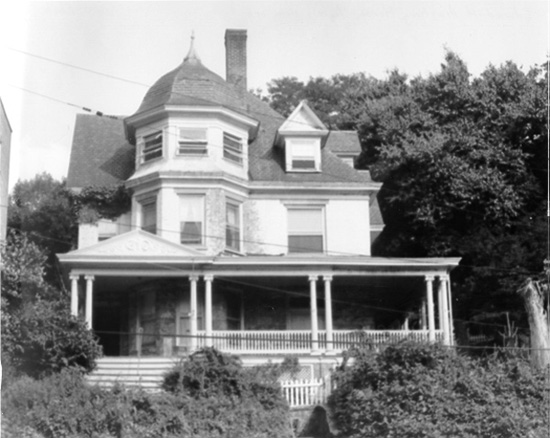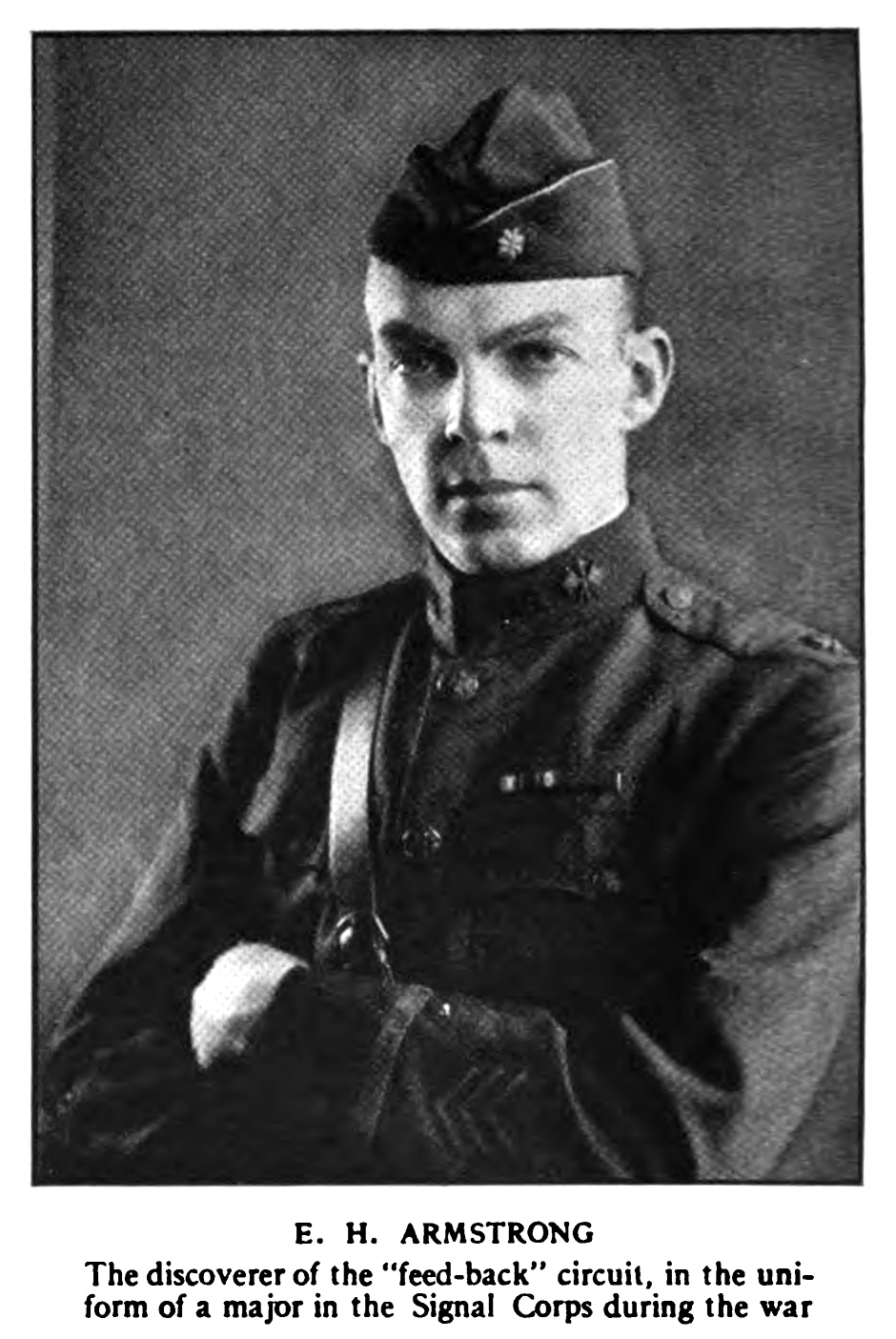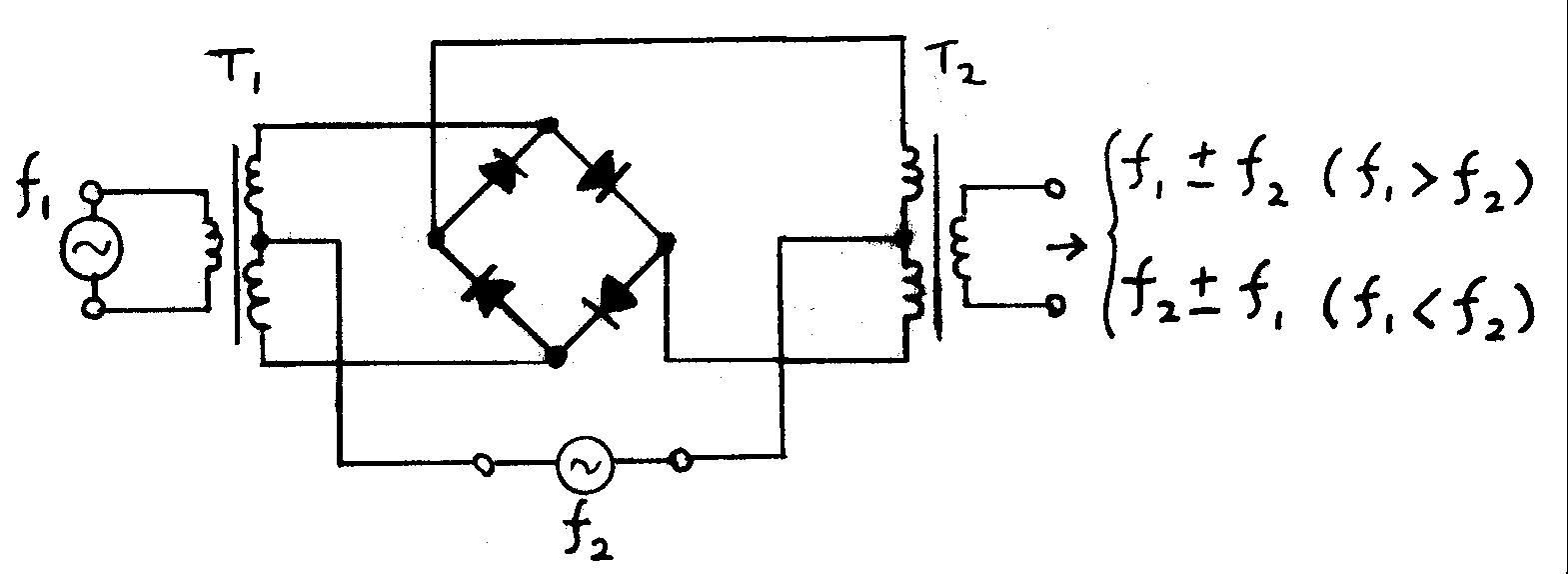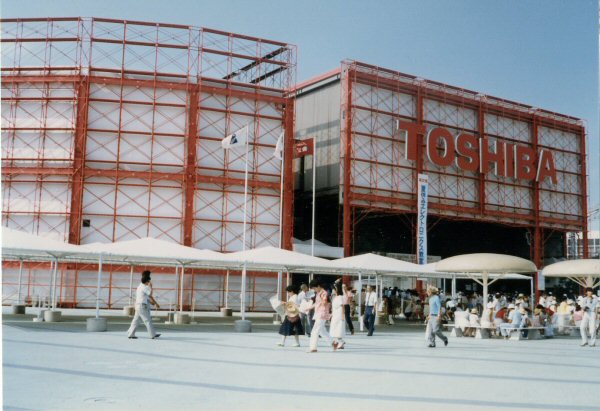|
Superhet
A superheterodyne receiver, often shortened to superhet, is a type of radio receiver that uses frequency mixing to convert a received signal to a fixed intermediate frequency (IF) which can be more conveniently processed than the original carrier frequency. It was long believed to have been invented by US engineer Edwin Armstrong, but after some controversy the earliest patent for the invention is now credited to French radio engineer and radio manufacturer Lucien Lévy. Virtually all modern radio receivers use the superheterodyne principle; except those software-defined radios using ''direct sampling''. History Heterodyne Early Morse code radio broadcasts were produced using an alternator connected to a spark gap. The output signal was at a carrier frequency defined by the physical construction of the gap, modulated by the alternating current signal from the alternator. Since the output frequency of the alternator was generally in the audible range, this produces an audible a ... [...More Info...] [...Related Items...] OR: [Wikipedia] [Google] [Baidu] |
Radio Receiver
In radio communications, a radio receiver, also known as a receiver, a wireless, or simply a radio, is an electronic device that receives radio waves and converts the information carried by them to a usable form. It is used with an antenna. The antenna intercepts radio waves (electromagnetic waves of radio frequency) and converts them to tiny alternating currents which are applied to the receiver, and the receiver extracts the desired information. The receiver uses electronic filters to separate the desired radio frequency signal from all the other signals picked up by the antenna, an electronic amplifier to increase the power of the signal for further processing, and finally recovers the desired information through demodulation. Radio receivers are essential components of all systems that use radio. The information produced by the receiver may be in the form of sound, video (television), or digital data. A radio receiver may be a separate piece of electronic equipment, or an ... [...More Info...] [...Related Items...] OR: [Wikipedia] [Google] [Baidu] |
Edwin Howard Armstrong
Edwin Howard Armstrong (December 18, 1890 – February 1, 1954) was an American electrical engineer and inventor, who developed FM (frequency modulation) radio and the superheterodyne receiver system. He held 42 patents and received numerous awards, including the first Medal of Honor awarded by the Institute of Radio Engineers (now IEEE), the French Legion of Honor, the 1941 Franklin Medal and the 1942 Edison Medal. He was inducted into the National Inventors Hall of Fame and included in the International Telecommunication Union's roster of great inventors. Armstrong attended Columbia University, and served as a professor there for most of his life. Early life Armstrong was born in the Chelsea district of New York City, the oldest of John and Emily (née Smith) Armstrong's three children. His father began working at a young age at the American branch of the Oxford University Press, which published bibles and standard classical works, eventually advancing to the position of ... [...More Info...] [...Related Items...] OR: [Wikipedia] [Google] [Baidu] |
Edwin Armstrong
Edwin Howard Armstrong (December 18, 1890 – February 1, 1954) was an American electrical engineer and inventor, who developed FM (frequency modulation) radio and the superheterodyne receiver system. He held 42 patents and received numerous awards, including the first Medal of Honor awarded by the Institute of Radio Engineers (now IEEE), the French Legion of Honor, the 1941 Franklin Medal and the 1942 Edison Medal. He was inducted into the National Inventors Hall of Fame and included in the International Telecommunication Union's roster of great inventors. Armstrong attended Columbia University, and served as a professor there for most of his life. Early life Armstrong was born in the Chelsea district of New York City, the oldest of John and Emily (née Smith) Armstrong's three children. His father began working at a young age at the American branch of the Oxford University Press, which published bibles and standard classical works, eventually advancing to the position of v ... [...More Info...] [...Related Items...] OR: [Wikipedia] [Google] [Baidu] |
Intermediate Frequency
In communications and electronic engineering, an intermediate frequency (IF) is a frequency to which a carrier wave is shifted as an intermediate step in transmission or reception. The intermediate frequency is created by mixing the carrier signal with a local oscillator signal in a process called heterodyning, resulting in a signal at the difference or beat frequency. Intermediate frequencies are used in superheterodyne radio receivers, in which an incoming signal is shifted to an IF for amplification before final detection is done. Conversion to an intermediate frequency is useful for several reasons. When several stages of filters are used, they can all be set to a fixed frequency, which makes them easier to build and to tune. Lower frequency transistors generally have higher gains so fewer stages are required. It's easier to make sharply selective filters at lower fixed frequencies. There may be several such stages of intermediate frequency in a superheterodyne receiver; t ... [...More Info...] [...Related Items...] OR: [Wikipedia] [Google] [Baidu] |
Heterodyne
A heterodyne is a signal frequency that is created by combining or mixing two other frequencies using a signal processing technique called ''heterodyning'', which was invented by Canadian inventor-engineer Reginald Fessenden. Heterodyning is used to shift signals from one frequency range into another, and is also involved in the processes of modulation and demodulation. The two input frequencies are combined in a nonlinear signal-processing device such as a vacuum tube, transistor, or diode, usually called a '' mixer''. In the most common application, two signals at frequencies and are mixed, creating two new signals, one at the sum of the two frequencies , and the other at the difference between the two frequencies . The new signal frequencies are called ''heterodynes''. Typically, only one of the heterodynes is required and the other signal is filtered out of the output of the mixer. Heterodyne frequencies are related to the phenomenon of "beats" in acoustics. A major a ... [...More Info...] [...Related Items...] OR: [Wikipedia] [Google] [Baidu] |
Regenerative Receiver
A regenerative circuit is an amplifier circuit that employs positive feedback (also known as regeneration or reaction). Some of the output of the amplifying device is applied back to its input so as to add to the input signal, increasing the amplification. One example is the Schmitt trigger (which is also known as a regenerative comparator), but the most common use of the term is in Radio Frequency, RF amplifiers, and especially regenerative receivers, to greatly increase the gain (electronics), gain of a single amplifier stage. The regenerative receiver was invented in 1912 and patented in 1914US Patent 1113149A, Edwin H. Armstrong, Wireless receiving system', filed October 29, 1913, granted October 6, 1914 by American electrical engineer Edwin Armstrong when he was an undergraduate at Columbia University. It was widely used between 1915 and World War II. Advantages of regenerative receivers include increased sensitivity with modest hardware requirements, and increased selec ... [...More Info...] [...Related Items...] OR: [Wikipedia] [Google] [Baidu] |
Lucien Lévy
Lucien Lévy (11 March 1892 – 24 May 1965) was a French radio engineer and radio receiver manufacturer. He invented the superheterodyne method of amplifying radio signals, used in almost all AM radio receivers. His patent claim was at first disallowed in the United States in favour of the American Edwin Howard Armstrong, but on appeal Lévy's claim as inventor was accepted in the US. Early years Lucien Lévy was born in Paris on 11 March 1892. He attended school in Paris at the Collège Rollin, then the Collège Chaptal. He obtained his diploma as an engineer from the École supérieure de physique et de chimie industrielles de Paris. World War I During World War I (1914–18) Lévy was assigned to Colonel Gustave-Auguste Ferrié as sapper-telegraphist. Captain Paul Brenot headed the second group of the Military Telegraphic Service. Members of the group included Henri Abraham, Maurice de Broglie, Paul Laüt and Lucien Lévy. He was made head of the Eiffel Tower Military Radio ... [...More Info...] [...Related Items...] OR: [Wikipedia] [Google] [Baidu] |
Detector (radio)
In radio, a detector is a device or circuit that extracts information from a modulated radio frequency current or voltage. The term dates from the first three decades of radio (1888-1918). Unlike modern radio stations which transmit sound (an audio signal) on an uninterrupted carrier wave, early radio stations transmitted information by ''radiotelegraphy''. The transmitter was switched On-off_keying, on and off to produce long or short periods of radio waves, spelling out text messages in Morse code. Therefore, early radio receiver, radio receivers had only to distinguish between the presence or absence of a radio signal. The device that performed this function in the receiver circuit was called a ''detector''. A variety of different detector devices, such as the coherer, electrolytic detector, magnetic detector and the crystal detector, were used during the wireless telegraphy era until superseded by vacuum tube technology. After sound (amplitude modulation, AM) transmission began ... [...More Info...] [...Related Items...] OR: [Wikipedia] [Google] [Baidu] |
Frequency Mixer
In electronics, a mixer, or frequency mixer, is an electrical circuit that creates new frequencies from two signals applied to it. In its most common application, two signals are applied to a mixer, and it produces new signals at the sum and difference of the original frequencies. Other frequency components may also be produced in a practical frequency mixer. Mixers are widely used to shift signals from one frequency range to another, a process known as heterodyning, for convenience in transmission or further signal processing. For example, a key component of a superheterodyne receiver is a mixer used to move received signals to a common intermediate frequency. Frequency mixers are also used to modulate a carrier signal in radio transmitters. Types The essential characteristic of a mixer is that it produces a component in its output which is the product of the two input signals. Both active and passive circuits can realize mixers. Passive mixers use one or more diodes and ... [...More Info...] [...Related Items...] OR: [Wikipedia] [Google] [Baidu] |
Toshiba Vacuum Tube Radio
, commonly known as Toshiba and stylized as TOSHIBA, is a Japanese multinational conglomerate corporation headquartered in Minato, Tokyo, Japan. Its diversified products and services include power, industrial and social infrastructure systems, elevators and escalators, electronic components, semiconductors, hard disk drives (HDD), printers, batteries, lighting, as well as IT solutions such as quantum cryptography which has been in development at Cambridge Research Laboratory, Toshiba Europe, located in the United Kingdom, now being commercialised. It was one of the biggest manufacturers of personal computers, consumer electronics, home appliances, and medical equipment. As a semiconductor company and the inventor of flash memory, Toshiba had been one of the top 10 in the chip industry until its flash memory unit was spun off as Toshiba Memory, later Kioxia, in the late 2010s. The Toshiba name is derived from its former name, Tokyo Shibaura Denki K.K. (Tokyo Shibaura Electric ... [...More Info...] [...Related Items...] OR: [Wikipedia] [Google] [Baidu] |
Unity (mathematics)
1 (one, unit, unity) is a number representing a single or the only entity. 1 is also a numerical digit and represents a single unit of counting or measurement. For example, a line segment of ''unit length'' is a line segment of length 1. In conventions of sign where zero is considered neither positive nor negative, 1 is the first and smallest positive integer. It is also sometimes considered the first of the infinite sequence of natural numbers, followed by 2, although by other definitions 1 is the second natural number, following 0. The fundamental mathematical property of 1 is to be a multiplicative identity, meaning that any number multiplied by 1 equals the same number. Most if not all properties of 1 can be deduced from this. In advanced mathematics, a multiplicative identity is often denoted 1, even if it is not a number. 1 is by convention not considered a prime number; this was not universally accepted until the mid-20th century. Additionally, 1 is the ... [...More Info...] [...Related Items...] OR: [Wikipedia] [Google] [Baidu] |
Capacitive Coupling
Capacitive coupling is the transfer of energy within an electrical network or between distant networks by means of displacement current between circuit(s) nodes, induced by the electric field. This coupling can have an intentional or accidental effect. In its simplest implementation, capacitive coupling is achieved by placing a capacitor between two nodes. Where analysis of many points in a circuit is carried out, the capacitance at each point and between points can be described in a matrix form. Use in analog circuits In analog circuits, a coupling capacitor is used to connect two circuits such that only the AC signal from the first circuit can pass through to the next while DC is blocked. This technique helps to isolate the DC bias settings of the two coupled circuits. Capacitive coupling is also known as ''AC coupling'' and the capacitor used for the purpose is also known as a ''DC-blocking capacitor''. A coupling capacitor's ability to prevent a DC load from interfe ... [...More Info...] [...Related Items...] OR: [Wikipedia] [Google] [Baidu] |










